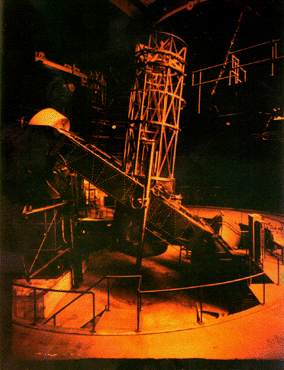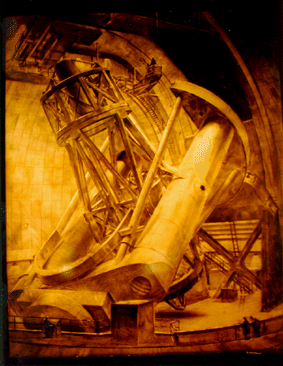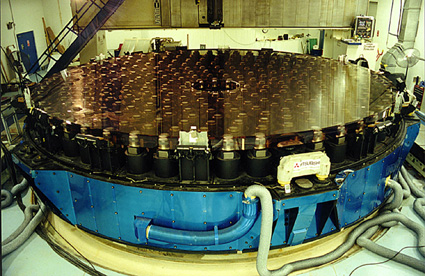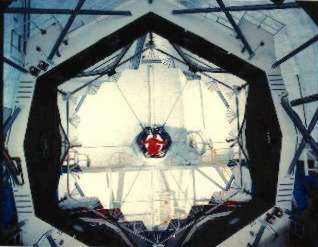Smaller telescopes use either the Newtonian focus or the Cassegrain focus. Each has its own advantages and disadvantages:
| Newtonian | Simple mirrors, easy to build | Long, open tube vulnerable to dust and wind-pressure |
| Cassegrain | Hole in main mirror, convex secondary mirror | Short tube, usually sealed against dust |
Larger telescopes use other variations on the focus:

Very large telescopes usually use an open framework to locate the mirrors and rely on a building to keep out the wind and dust. The basic design has not changed much since the 1917 Hooker telescope. Its 100 inch diameter mirror was the state of the art at that time.

The 200 inch (5 meter) diameter mirror of the Hale Telescope at Mt. Palomar was completed in 1948 and remains one of the world's most productive astronomical telescopes.
Mirrors larger than 5 meters in diameter begin to sag under their own weight. As the telescope moves to point in different directions, the sag changes and the mirror changes shape.

The cure for this problem can be seen in the Subaru 8.2 meter diameter mirror. The mirror is supported by a set of computer-controlled mechanical "actuators" that push and pull it to correct its shape as it moves.

Another approach is to divide the mirror into segments. The twin Keck Telescopes on Mauna Kea use mirrors that each consist of 36 hexagonal segments. Each segment is positioned by computer-controlled actuators so that they all function as a single mirror surface.